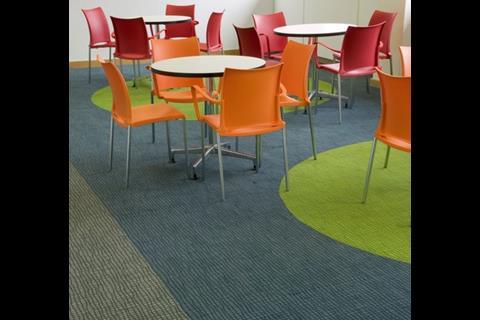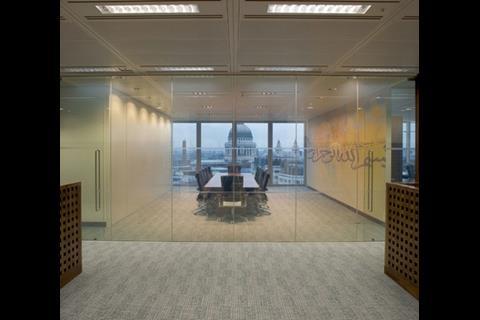Mary-Lorraine Hughes of Milliken Carpet tells us how her firm works to increase the longevity of flooring in commercial buildings and reduce the amount sent to landfill
Milliken Carpet Europe has traded since the eighties and is part of South Carolina-based conglomerate Milliken & Company, which was founded in the 1860s. With its headquarters in Wigan and more than 200 employees across the Continent, it makes modular carpet tiles for the commercial sector.
Mary-Lorraine Hughes, the firmŌĆÖs managing director, talks about reconditioning old carpets and reducing landfill.
Describe your market
Our market is any commercial location, large or small, that requires a floor covering. The Department for Work and PensionsŌĆÖ Job Centre Plus was a significant recent contract. It lasted two or three years and we finished towards the end of last year. Working with two installation companies we provided carpet tiles for all job centres. We used our digital placement colour technology, which enables bespoke patterns to be applied to base products, reflecting, for instance, corporate colours, images or logos.
We have our highest sales in the UK but thereŌĆÖs strong growth across our market, particularly in Eastern Europe. Other carpet systems and different types of flooring are also part of the same market. There was a trend some years ago to move away from soft flooring, but there are noise issues with harder floors so recently thereŌĆÖs been a trend back to soft coverings.
Is it a competitive market?
Yes, it is, price-wise. You have to offer unique solutions, such as our treatment of carpet tiles under cushions, which allows adhesion-free installation, so tiles canŌĆÖt move from side to side but can be easily lifted.
What is special about Milliken?
Our yarn is made from nylon or a nylon and wool mix and it is recycled, as is the material in our backing cushion, which we use instead of underlay. Also, if a client wants a new carpet when its old one is still serviceable, weŌĆÖll take back any full tiles in reasonable condition, recondition them and sell them on, thus reducing landfill.
Which of your products are most popular and why?
In the past few months weŌĆÖve had many orders for the more expensive end of our range, which includes luxury cut pile and cushion-backed premium loop products, particularly as weŌĆÖve been dealing with large financial corporations.
Many customers look for products that will perform well, with at least five or 10 yearsŌĆÖ longevity, and theyŌĆÖre becoming less likely to ask for disposable products. This ties in with peopleŌĆÖs rising green awareness and our desire to develop long-term relationships with our clients. We have a network of partners who visit existing customers to maintain their carpets.
What new products are you working on?
New designs are introduced once or twice a year. Work on a new texture has been continuing for about 18 months and will be launched later this year. Environmentalism is an important driver ŌĆō thereŌĆÖs a real acceleration of awareness, and architects are eager to present environmentally-friendly products to their clients.
Who has the most input into specification?
It varies depending on who the end user is. If itŌĆÖs a big project, itŌĆÖs heavily influenced by the architect or designer, though occasionally the client or end user will have a big say. A wide variety of parties are involved in the process.
What are your lead times?
Our standard products take 10 days from ordering to dispatch. The same lead time is offered for our bespoke designs and this is unique in the market ŌĆō nobody else I know of could turn that service around so quickly. But for very large orders ŌĆō over 10,000m2 ŌĆō times differ, and we work with our clients to draw up schedules.
Topics
Specifier 4 May 2007
- 1
- 2
- 3
- 4
- 5
- 6
- 7
- 8
- 9
 Currently reading
Currently readingMilliken Carpet: WeŌĆÖve got it covered
- 10
- 11
- 12
- 13
- 14
- 15



































No comments yet